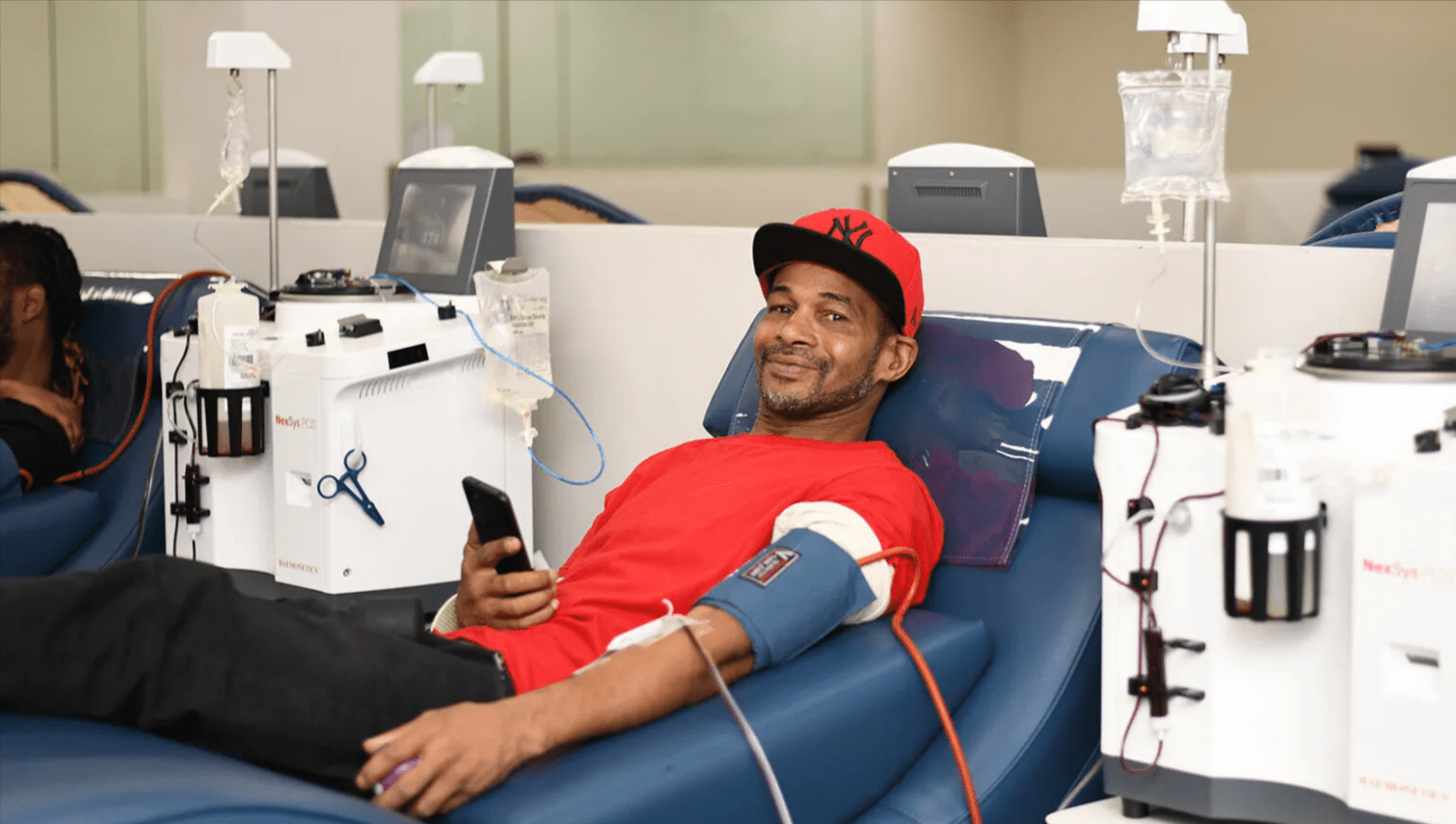The heartbeat of modern medicine relies on a substance most people rarely think about: plasma. This often overlooked component of your blood is, quite literally, the “liquid gold” that powers life saving treatments for thousands of patients worldwide. Yet, for many in West Valley, Utah, and beyond, the idea of plasma donation in West Valley, Utah is shrouded in mystery, misconception, or simply falls off the radar. This comprehensive, in depth guide is designed to demystify the process, illuminate the monumental impact of your contribution, and walk you through every step of becoming a vital lifeline in your community. Prepare to discover the incredible science behind this generous act, and learn how a small investment of your time can generate a huge return in human health and well being.
Decoding the Power of Plasma
The Science Behind the Yellow Elixir
To truly appreciate the value of plasma donation in West Valley, Utah, it helps to understand the fundamental science. When you look at blood, what you see is a thick, dark red fluid. But if you separate that blood, you’ll find that the largest component, about 55% of the total volume, is a pale, straw colored liquid: plasma.
Plasma is the body’s essential transportation system. It’s 90% water, but the remaining 10% is a powerful cocktail of vital components that make life possible. These components include:
- Proteins: These are the manufacturing hubs of plasma. Crucial proteins like albumin help regulate fluid balance, preventing swelling, while fibrinogen is essential for blood clotting. Most critically for the medical world are the immunoglobulins (antibodies), which are the immune system’s frontline defenders against pathogens.
- Electrolytes: Minerals like sodium and potassium that maintain cell function and regulate the body’s pH balance.
- Hormones and Nutrients: It acts as the delivery truck, transporting hormones from endocrine glands to target organs, and delivering essential nutrients to cells throughout the body.
Plasma doesn’t just keep you healthy; its inherent biological function is the basis for its therapeutic use. The proteins it carries are the raw material for highly specialized, life saving medicines known as plasma derived therapies. Without donated plasma, these essential treatments simply cannot be manufactured.
The Real-Life Echo of Your Generosity
When you participate in plasma donation in West Valley, Utah, the impact is not theoretical; it is immediately translated into tangible medical relief for vulnerable patients. Every single donation contributes to a pooled supply used to extract and concentrate those vital proteins, creating medicines that offer hope where there was none.
Imagine the young child suffering from hemophilia, a genetic disorder where the blood cannot clot properly. The clotting factor concentrates that keep this child safe from life threatening bleeding episodes are derived entirely from donated plasma. Think of the elderly patient with a severe, rare primary immunodeficiency whose body lacks the ability to fight off infections. Immunoglobulin therapies (IVIG), which infuse the patient with healthy, ready made antibodies, are their shield against constant illness.
Furthermore, plasma is indispensable in crisis medicine:
- Trauma and Burn Victims: Plasma is crucial for rapidly restoring blood volume and helping to control bleeding in emergency situations.
- Liver Disease: Patients with liver failure often require plasma transfusions to replenish necessary clotting factors.
In a thriving community like West Valley, Utah, local hospitals and clinics are constantly reliant on a steady, robust supply of these products. By becoming a regular donor, you are an active participant in a powerful cycle of healing, directly enabling local healthcare systems to save and improve lives, making your personal action a collective community benefit.
Dispelling the Donation Myths
Despite the immense medical necessity, plasma donation in West Valley, Utah remains hampered by a thick fog of enduring myths and baseless fears. Clearing up these common misconceptions is the first step toward unlocking the potential of new donors.
Myth 1: “It’s too painful and takes forever.”
- The Reality: While the initial needle prick is unavoidable, the process itself, known as plasmapheresis, is generally reported by donors as comfortable and often involves less discomfort than a regular blood draw. The total time commitment, from check in to post donation rest, typically ranges from 45 to 90 minutes. Yes, it’s longer than a standard blood donation, but this is because the specialized machine draws your blood, separates the plasma, and then safely returns the remaining red blood cells and platelets to your body. During this time, you can relax, read, or stream a movie.
Myth 2: “Only certain people can donate.”
- The Reality: The criteria are broad and designed for donor and patient safety, not exclusivity. Most healthy adults who meet the basic guidelines can donate. Ethnicity, gender, and social status are irrelevant. The requirements are standard:
- Be at least 18 years old.
- Weigh a minimum of 110 pounds.
- Be in generally good health.
- Pass a health screening and physical exam on site.
Myth 3: “Donating weakens your immune system.”
- The Reality: This is simply untrue. Because the red blood cells and platelets are returned to your body, and plasma is mostly water, your body can rapidly regenerate the donated plasma components. The proteins, particularly the antibodies, are quickly replenished by your body’s natural processes. You are not compromising your own health to help others; the process is designed to be safe and sustainable for regular donations, often allowing for donations up to twice per week.
Addressing these points is crucial. By understanding the truth, potential donors can move past apprehension and recognize the simple, secure nature of this profoundly generous act.
Your Step by Step Donation Journey
A successful first donation starts with preparation and knowledge. Here is your roadmap to a seamless, safe experience at a plasma donation in West Valley, Utah center.
Essential Preparation for a Smooth Experience
Think of your donation appointment like a mini marathon: your body needs to be fueled and ready.
- Hydration is Key: This is the single most important tip. Start drinking plenty of water (8 to 10 glasses) at least 24 hours before your appointment. Well hydrated veins are easier to access, and adequate fluid levels will make the plasmapheresis process faster and help you feel better afterward.
- Eat a Nutritious Meal: Consume a protein rich, balanced meal 2 to 3 hours before donating. Avoid high fat foods (like cheeseburgers, fries, or pizza) immediately before your visit, as this can affect the quality of your plasma and potentially lengthen the screening process.
- Check Medications: Be upfront and familiar with the donation center’s list of medications. Certain prescription or over the counter drugs can temporarily disqualify you. If in doubt, call the center beforehand.
- Documentation: Bring a valid government issued ID, proof of address, and your social security card.
- Attire: Wear comfortable clothing, specifically a shirt with sleeves that can be easily rolled up above the elbow.
The Donation Process Demystified
The procedure itself is routine, conducted by trained healthcare professionals who prioritize your safety and comfort at all plasma donation in West Valley, Utah centers.
- Check in and Vitals: Upon arrival, you’ll complete a health questionnaire and check in with your ID. A staff member will then take your vitals, checking your blood pressure, pulse, temperature, and performing a quick, non invasive finger stick test to check your protein and hematocrit levels. This ensures you are healthy enough to donate safely.
- The Mini Exam: A trained screener or physician will review your health history and questionnaire, confirming your eligibility in a brief private consultation.
- The Donation: Once cleared, you will be escorted to a comfortable reclining chair. A single use, sterile needle will be inserted into a vein, usually in your inner elbow. Your blood is drawn into the plasmapheresis machine, where the plasma is separated and collected in a sterile container. Simultaneously, a saline solution and your remaining blood components are returned to your body. You might feel a cool sensation during the return cycle.
- Monitoring and Completion: The staff continuously monitors you throughout the process, which lasts between 45 to 90 minutes. Once the required volume is collected, the needle is removed, and a pressure bandage is applied to the site.
Post Donation Care: Your Recovery Checklist
Recovery is swift, provided you follow a few simple guidelines to help your body bounce back quickly after your plasma donation in West Valley, Utah.
- Hydrate, Hydrate, Hydrate: Continue to drink plenty of non alcoholic fluids for the next several hours to replace the lost plasma volume.
- Rest and Relax: Avoid strenuous physical activity, heavy lifting, or intense workouts for the rest of the day. Treat yourself to a relaxed afternoon.
- Nourishment: Eat a light meal rich in protein and carbohydrates to replenish energy stores.
- Monitor the Site: Keep the bandage on for at least an hour. If you experience dizziness or lightheadedness, inform the staff immediately before leaving the center, or lie down and elevate your feet until the feeling passes.
By adhering to this simple routine, most donors feel perfectly normal within an hour or two and are ready to resume their daily routines the next morning, often returning to donate again within the required interval.
Community and Compensation in West Valley
Finding Your Donation Hub in West Valley, Utah
West Valley City is well served by several highly reputable, regulated plasma donation centers. These facilities are equipped with state of the art technology and staffed by certified medical professionals, ensuring donor safety is the top priority. One example of a location is ABO Plasma at 3495 West 3500 South, West Valley City, UT 84119. Other major national companies often have centers in the surrounding Salt Lake Valley area, such as Octapharma Plasma and BioLife Plasma Services.
Before your first visit for plasma donation in West Valley, Utah, it is always wise to:
- Check Online: Visit the center’s website to confirm hours, required documentation, and current eligibility rules.
- Call Ahead: Inquire about current promotions for first time donors and their specific donation schedules.
- Verify Services: Confirm they offer health screenings and post donation resources.
The Incentives: What You Receive for Your Generosity
While the primary motivation for plasma donation in West Valley, Utah is overwhelmingly altruistic, the profound knowledge that you are saving lives, donation centers recognize the time commitment required and offer tangible incentives.
- Financial Compensation: This is the most common and significant incentive. Plasma donation centers provide monetary compensation for each successful donation. The amount can vary based on several factors:
- The center’s specific pay structure (often involving higher pay for new donors).
- Your location (local demand).
- How frequently you donate (many centers offer higher bonuses for consistent, frequent donors).
- Weight and plasma volume collected.
New donors in the Utah area can often earn a total of several hundred dollars during their first month of donation through introductory bonuses. The typical compensation is paid out via a pre loaded debit card immediately after the donation, offering a reliable, supplementary income stream.
- Free Health Screenings: Every time you donate, you receive a free health check up, including a look at your vital signs, protein, and hematocrit levels. Additionally, centers conduct regular screenings for certain infectious diseases. This consistent, free monitoring can be an invaluable personal health benefit, often catching minor issues before they become major problems.
- Promotions and Bonuses: Centers frequently offer special bonuses, referral rewards, or holiday promotions to further reward committed donors.
The Ripple Effect: Sharing Your Story
Ultimately, the most powerful tool for increasing the blood supply is the personal testimonial. By sharing your positive experience with plasma donation in West Valley, Utah, the simplicity of the process, the welcoming staff, the feeling of purpose, you help break down the final barriers for hesitant friends, family, and colleagues.
Use social media, word of mouth, or even community groups to explain why you donate and how easy it is. Every single donor story creates a ripple effect, leading to a culture of giving that saves more lives, ensures local hospitals are fully stocked, and cements your position as a silent, yet powerful, hero of the West Valley community. Plasma donation in West Valley, Utah is more than a transaction; it’s a profound civic duty and a consistent investment in the health of your neighbors.








